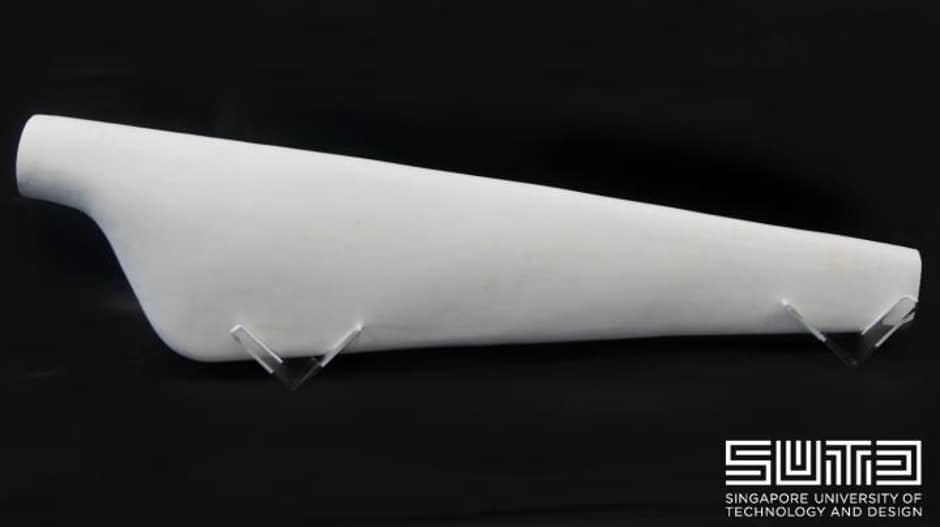Cellulose used to fabricate large 3D objects
Cellulose has been used to fabricate large 3D objects, an advance that overcomes problems associated with utilising the abundant organic compound.

The lack of scalability and high production cost are two of the issues that have stymied the use of cellulose as a 3D printing material, but a team from Singapore University of Technology and Design (SUTD) believe they have overcome these problems with FLAM (fungal-like adhesive materials).
According to SUTD, their approach has been inspired by the wall of the fungus-like oomycetes, which is reproduced by introducing small amounts of chitin between cellulose fibres. The resulting FLAM are said to be strong, lightweight and inexpensive, and can be moulded or processed using woodworking techniques.
No organic solvents or synthetic plastics are used to manufacture the material, which is scalable and can be reproduced without specialised facilities. FLAM is also fully biodegradable in natural conditions and outside composting facilities.
It is further claimed that the cost of FLAM is in the range of commodity plastics and 10 times lower than the cost of common filaments for 3D printing, such as PLA (polylactic acid) and ABS (Acrylonitrile Butadiene Styrene). The researchers have furthermore developed an additive manufacturing technique specifically for the material.
Register now to continue reading
Thanks for visiting The Engineer. You’ve now reached your monthly limit of news stories. Register for free to unlock unlimited access to all of our news coverage, as well as premium content including opinion, in-depth features and special reports.
Benefits of registering
-
In-depth insights and coverage of key emerging trends
-
Unrestricted access to special reports throughout the year
-
Daily technology news delivered straight to your inbox










UK Enters ‘Golden Age of Nuclear’
Anybody know why it takes from 2025 to mid 2030's to build a factory-made SMR, by RR? Ten years... has there been no demonstrator either? Do RR...